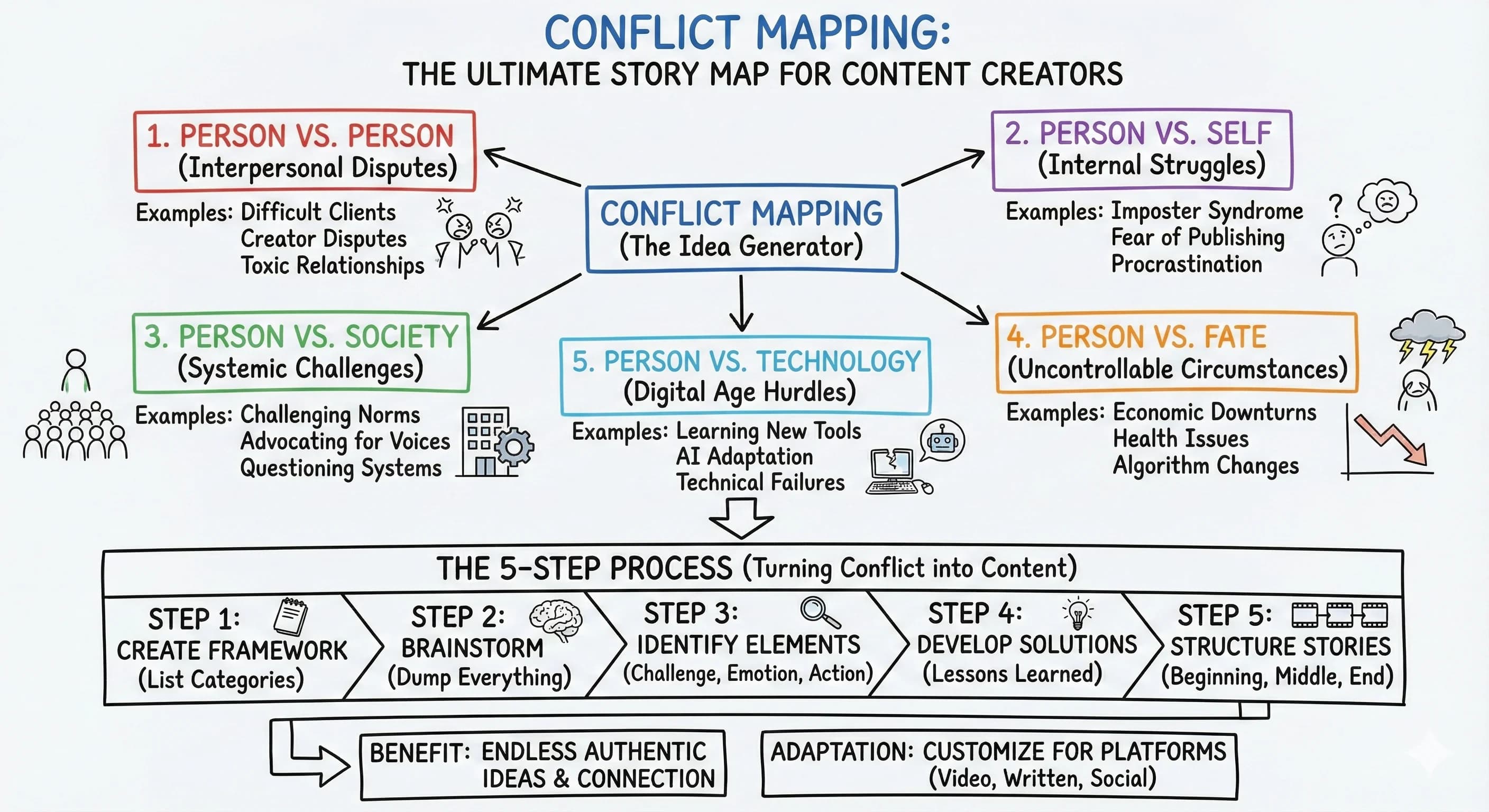Conflict Mapping for Content Creators: The Ultimate Story Map Template
Master conflict mapping to generate endless story ideas. Learn how content creators use this story map template to turn personal experiences into engaging content.
•6 min read
Details
Topic:

Loading content...

